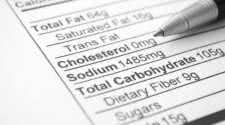Suggestions on How to Lower Cholesterol without Medication

Achieving and Maintaining Low Cholesterol Levels is Key
High levels of total blood cholesterol and LDL cholesterol (often called bad cholesterol) are risk factors for high blood pressure and heart attack LDL cholesterol, a
silent killer, causes the buildup and brown of fat deposits in the blood vessels, thereby priming the body for a heart attack. However, for high cholesterol to inflict
noticeable health problems takes many years. If your annual blood test reports elevated cholesterol, you do have time to make the changes necessary to lower the level.
A mild elevation of cholesterol is normally correctable by some simple changes to your lifestyle and diet, without the need to use lifelong cholesterol-lowering drugs.
So what can you do to lower cholesterol? Well, since you are a reader of fitFLEX you should already be getting a regular dose of healthy exercise, right? The next
obvious step is to reduce the amount of fat in your diet. If you stop consuming foods high in cholesterol, the level of fat in your body should subside as well. Other
dietary interventions may also help. Eating foods that are high in fiber, e.g. oat bran, fruits, vegetables rice, have a beneficial effect by lowering cholesterol.
Garlic also has potent cholesterol-reducing powers. Supplementing your low-fat diet with B vitamins and folic acid may help, too.
For most people with high cholesterol, it is the result of a poor diet dripping with fat. Doing regular exercise and switching to a low-fat diet will usually fix the
problem. Some unfortunate folk have a genetic predisposition to heart disease and are at greater risk If you have a close family member who has high blood pressure or
has suffered a heart attack, keeping a tab on your cholesterol level should be a priority, and treatment with preventative cholesterol-lowering medication may be a
valuable deterrent.